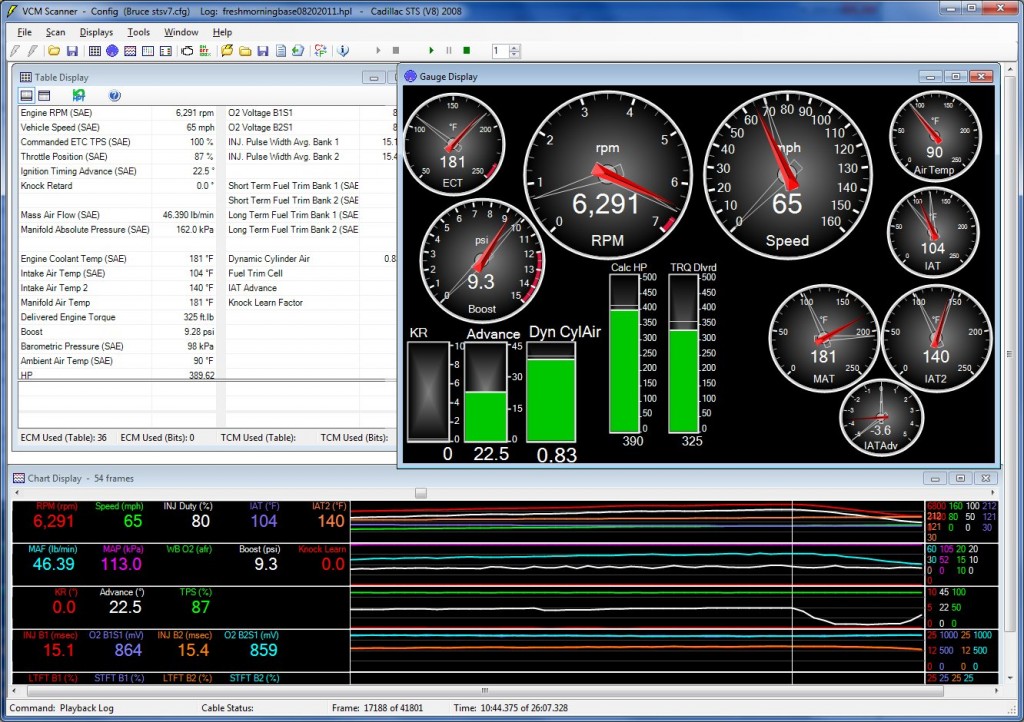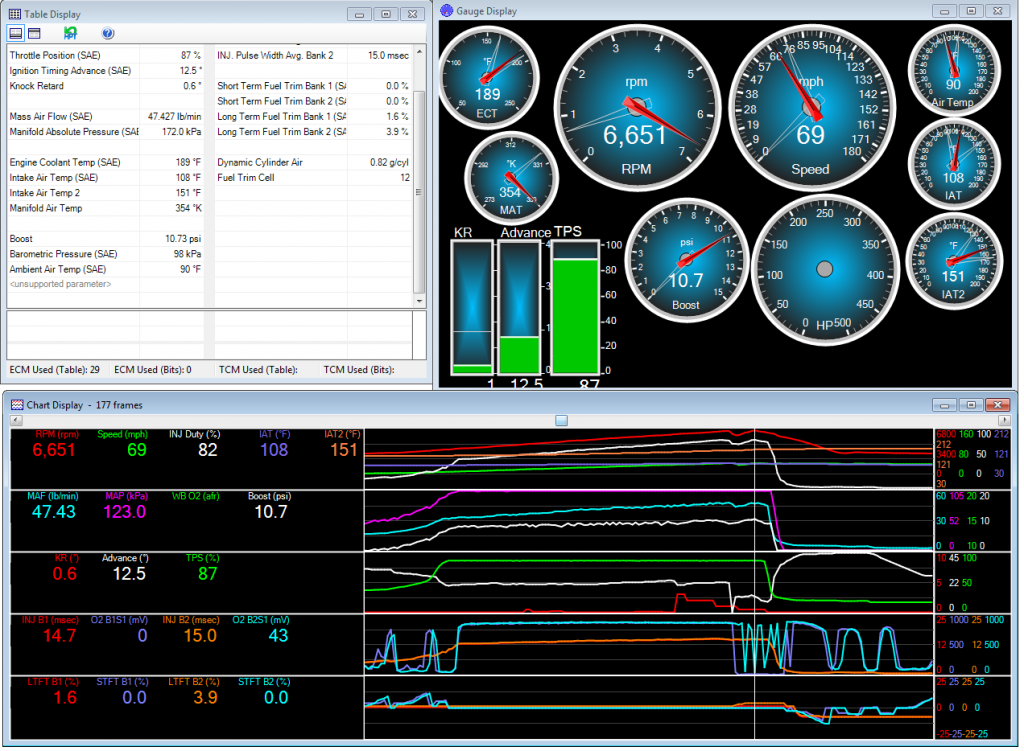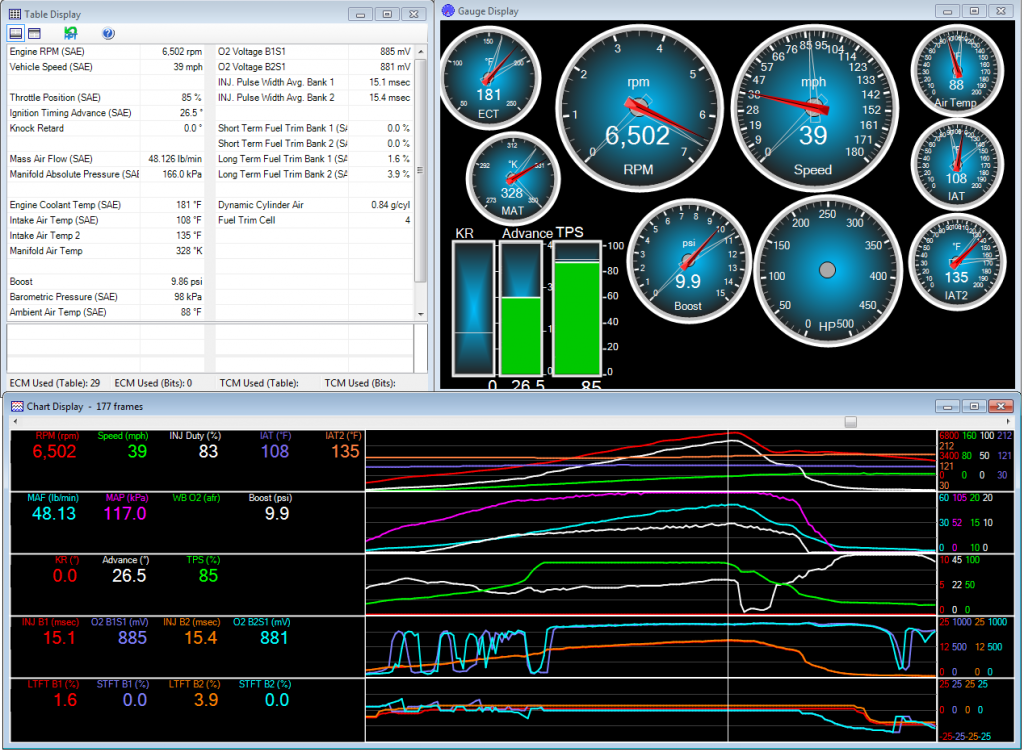I have been planning new data-logging experiments and modifications, so I have been reviewing the datalogs I did last August in the summer temperatures. For my next datalog I will attempt to capture comparative data to this info:
This screen is an HP Tuners VCM Scanner guage snapshot of parameters after a 0-60 run culminating at 65 mph.
| Baseline from August | ||||
| MPH | (Temps in Deg Fahrenheit) | |||
| Item | 0 | 30 | 45 | 60 |
| Ambient | 90 | 90 | 90 | 90 |
| IAT1 | 113 | 117 | 113 | 106 |
| IAT2 | 118 | 120 | 127 | 135 |
| MAT | 120 | 121 | 136 | 169 |
What we can see from this table, is that at the beginning of the 0-60 run the Ambient temp is 90F, and stays at 90F through the run.
IAT1: The IAT1, which is incoming air temperature as read in the intake air tubing, starts at 113F. It has rapidly gone up to this value because the STS-V is stopped. However, as the V accelerates to 30 mph it rises to 117F. By 45 mph it has returned to 113F, and by 60 mph due to the incoming 90F air cooling it has resolved to 106F. Conclusion: heating of the incoming air at the IAT1 sensor does in fact effect the air temperature, and thus performance. Conventional wisdom is that the incoming air is not in the intake tube long enough to become heated. Net Rise: -7F
IAT2: The IAT2, which is air after it has been heated by the supercharger and cooled by the intercooler, starts at 118F, a 5F increment over IAT1. By 30 mph it has risen to 120F. At 45 mph it has risen further to 127F, and by 60 mph has peaked at 135F. Net rise: +17F. Keeping in mind the IAT1 went down 7F in this time.
MAT: The manifold air temperature is a calculated value the engine uses to predict the temperature of air in the manifold. It tends to go up at a higher rate than IAT2. The MAT starts the run at 120F, is about the same at 30 mph at 121F, but rises to 136F by 45 mph and on to 169F by 60 mph. Improvements in the IAT2 should have even greater improvements in the MAT value. Net rise: +49F.
As a result of the high MAT temp by 65 mph as shown in the image, IAT temps are causing 3.6 degrees of advance to be pulled. This begins at 59 mph when the IAT2 hits 135F and the MAT is at 157F at -3.2 degrees.
This was a video capture of the dashboard of the 0-60 run from August:



